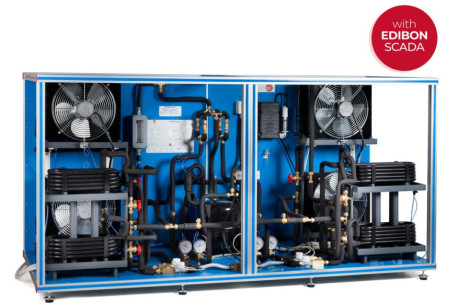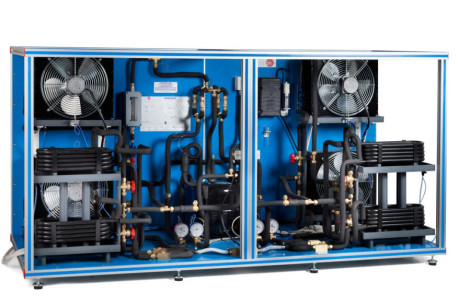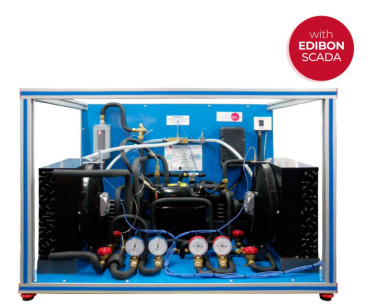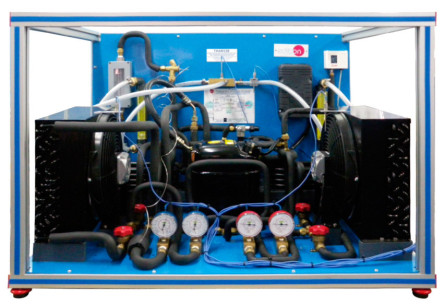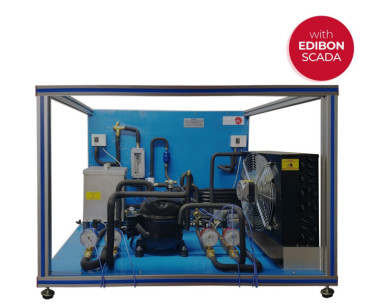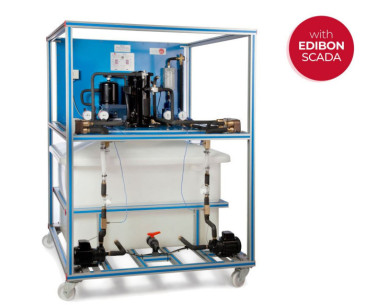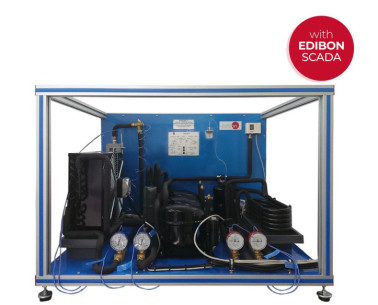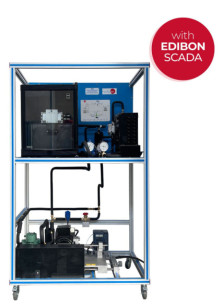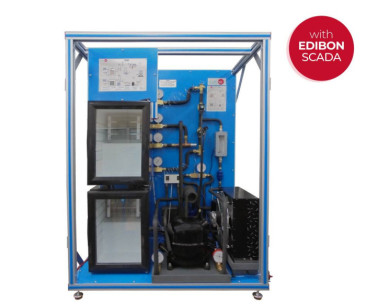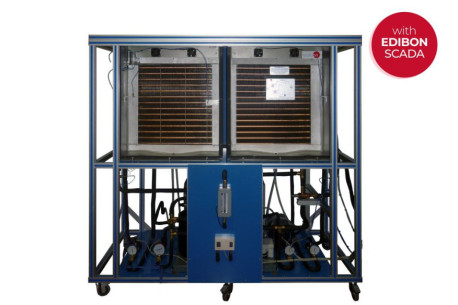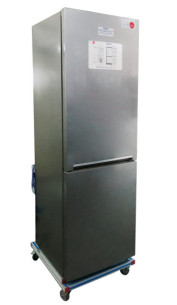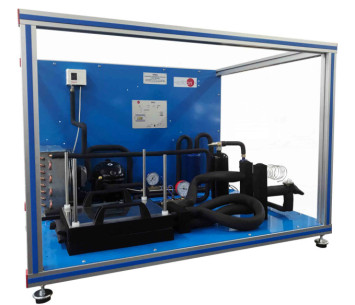FOR FURTHER INFORMATION, CONTACT US
9.4.- REFRIGERATION
Refrigeration is a thermodynamic process that consists in lowering or maintaining the temperature of a space or body. The process lies in extracting heat from a cold source and transferring it to a hot source. Cooling fluids are used to transport the energy.
View moreThe most widespread refrigeration system is the refrigeration cycle. This system follows a classic compression cycle:
- Compression: the compressor transforms the electrical energy into heat and transfers it to a cooling fluid, raising its pressure and temperature.
- Condensation: the refrigerant goes from gaseous state to liquid state in a condenser that gives heat to the hot source.
- Expansion: the liquid expands, it is transformed into gas and cooled.
- Evaporation: heat is absorbed from the cold source and it is transferred to the refrigerant.
The absorption cooling system also takes advantage of the refrigerant evaporation to absorb heat but does not use a compressor. In this cycle, the pressure difference is achieved by adding heat to a mixture of refrigerant and another substance, commonly water, which absorbs it. The refrigerant is usually ammonia or lithium bromide.
Thermoelectric cooling systems work with the Peltier effect. A Peltier heater is a solid-state heat pump that transfers heat from one side of the device to another, opposing the temperature gradient by consuming electrical energy.
The Vortex cooling system is the least widespread refrigerating machine due to its low performance. Compressed air is introduced tangentially into a vortex chamber, a cold air flow is formed in the center of the vortex, while the outer layer is heated. The cold air is extracted and can be used for cooling purposes.
The refrigeration systems are found in any conventional cold store or freezing chamber or for other applications that require low temperatures in a closed place within an environment at higher temperature.
View Products Cookie preferences
Cookie preferences

